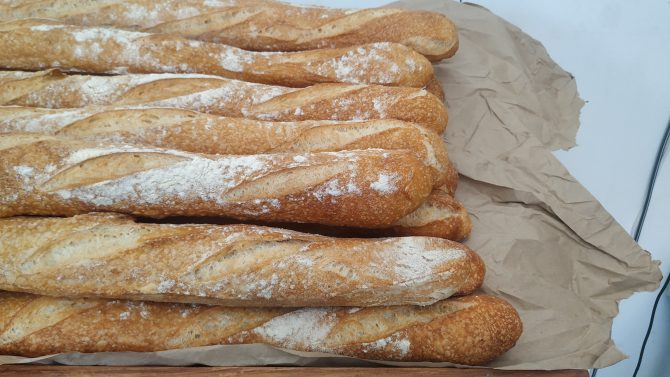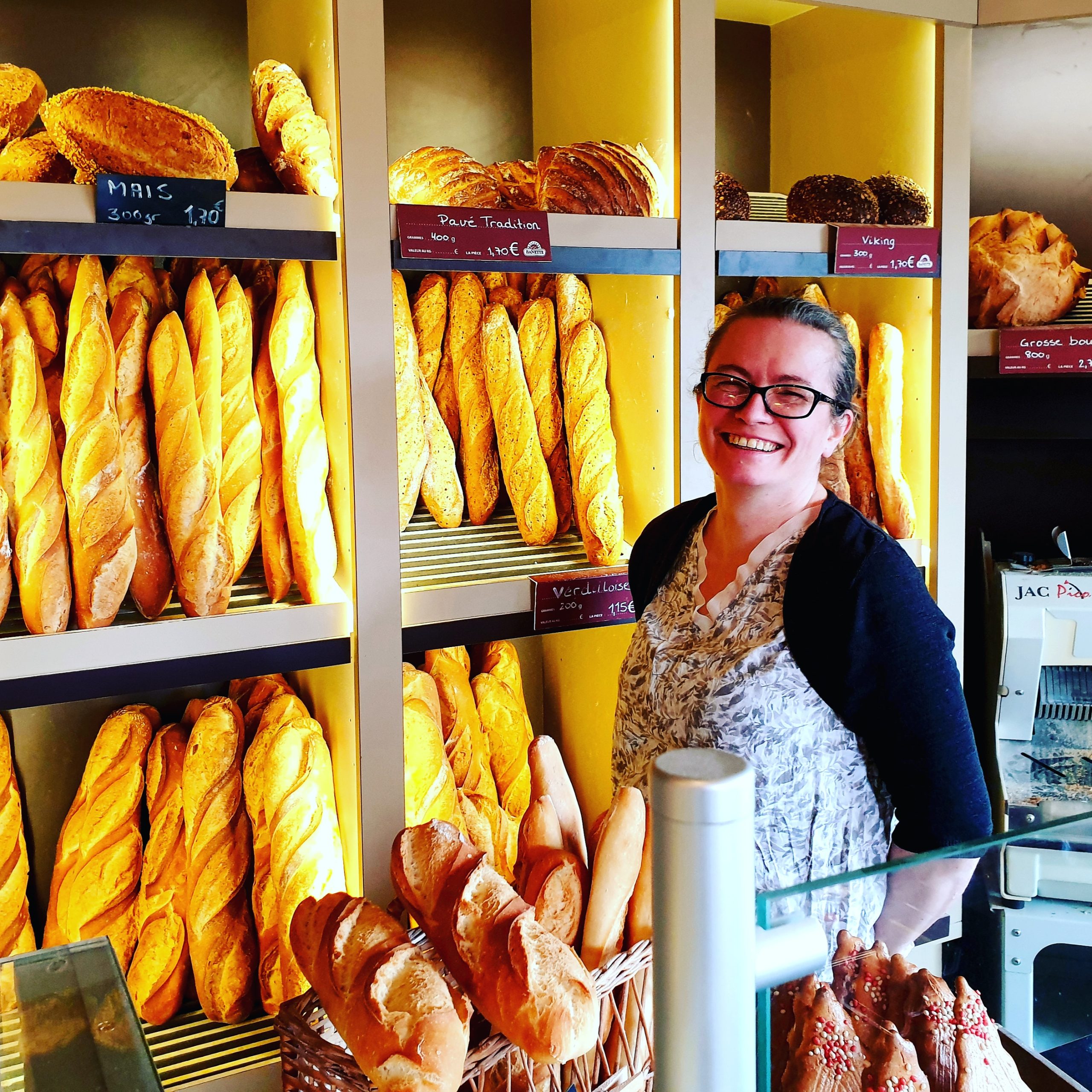How to Buy a Baguette in France: Everything You Need to Know
Community


Being awarded UNESCO World Heritage status and symbolizing the French way of life, the daily baguette is truly a French ritual. With reportedly over 16 million baguettes made each day, it is certainly worth celebrating, but what should you look for when buying a baguette?
What to look for when buying a baguette in France?
Firstly, find a local artisan Boulanger. These bakers are seriously skilled, and their knowledge about their flour and where it comes from, their methods and their products are seriously impressive. Consequently, their bread is massively superior to a mass-produced alternative.
We all come to France because of these amazing French traditions, so it seems only right to support the local boulangerie.
Different types of baguettes: which bread to choose?
Ask your local Boulanger about the different types of bread they make, as each one is likely to have a recommended purpose. Here in the Charente, our local artisanal Boulanger makes a ‘salami’ which is rounder and softer and, I am reliably informed, it is ideal for softer sandwiches with tomatoes, salami and cheese due to the shape.
A ‘pain’ is a bigger, slightly more robust baguette – ideal for the family table and double the size of a baguette.
A Boulanger often does their own particular speciality loaf and shapes it accordingly. Sometimes with little ‘bout’ for the children to break off the end and nibble. Here, we have ‘Verdilloise’ or ‘Gourvilleoise’, which are unique to those particular bakeries. Each with a special flourish.
A ‘marguerite’ in the shape of a daisy is good for soup – everyone can pull a little ball for themselves. Similarly, a ‘boule’ does not dry out as quickly as a baguette due to its shape.
A huge ‘couronne’ or a circular ‘crown’ is great for weekend family gatherings.
‘Mais’ made from maize flower is something a little different, and a ‘Viking’ (pronounced ‘V’ king) is nuttily wholegrain.
A favourite in our house is a ‘grignette’ sometimes called a ‘ficelle’ which is a thinner, smaller bread (think of an oversized breadstick) with little chunks of ham or chorizo or other savoury yumminess inside. Absolutely fabulous for aperos!
A ‘campagne’ is a country bread which has all of the wholegrains and can be very dense, whereas a ‘tradition’ has wheat flour and pointy ends.
You can ask for your bread ‘bien cuit’ if you like it well cooked and crusty or ‘moux’ if you like it soft and tranché if you would like it sliced.

Martina in our local boulangerie in Verdille.
How to order a baguette in France
Always greet with a smile and a ‘Bonjour Madame/Monsieur’.
Ask for what you would like, for example, “Une tradition bien cuit, s’il vous plait et deux baguettes pas trop cuit.”
‘Bien cuit’ means well-cooked, so it will be a nice, crusty loaf, whereas ‘pas trop cuit’ means not so well-cooked, i.e. a softer bread.
‘Tranché’ means sliced, and you may be asked if you would like your bread sliced if you buy a pain de mie (a slightly sweet, buttery loaf more similar to an English loaf), a Viking or similar. Simply say, “Tranché, s’il vous plait.”
Always finish with a thank you and have a good day.
“Merci beaucoup et bonne journée à vous »
How to store your baguette like a local
In short, there are no preservatives in traditionally made French bread, so do expect it to be hard the next day. The best idea is to use a bread bag – they do help. The whole idea in France is that we buy fresh bread daily, sometimes twice a day, so it really is not meant to last. It can be divided up when fresh and popped into a reusable bag in the freezer to avoid waste.
That said, do not throw your day-old baguette out. Here are some top tips:
- Do like the French do and toast it. Then slather with homemade jam.
- Make ‘Pain Perdu’ or eggy bread. Slice and soak in whisked raw egg for ten minutes, then fry gently on each side until cooked.
- Make Bread and Butter pudding.
- Once really hard, blitz it in the food processor to make breadcrumbs which will store in the freezer and are ideal for covering chicken strips or sprinkling over a baked gratin dish.
- Feed it to your hens or your neighbour’s hens or pigs as an occasional treat – do ask permission first, though.
- As a last resort, compost it.
Baguette Etiquette
It is safe to say a French meal is not complete without a baguette from a local boulangerie (yes, you can really tell the difference, plus it is good to support these traditional artisanal trades).
A more formal meal will usually have baguettes sliced and placed in a basket on the table to be passed around. More informally, the baguette may be placed on the table for the family to rip or slice as needed, avoiding the bread drying out and, thus, any waste.
The good news is there is no need to serve with butter – the French rarely do this, and there is also no need for side plates either – it is perfectly acceptable to place your bread on your plate or even next to your plate on the tablecloth.
Did you know? A few fun baguette facts.
- A baguette can only be called a baguette if it is 80cm long and weighs 250g!
- It contains flour, water, salt and yeast – nothing else, by law.
- Some believe the bread was ordered to be made in the long baguette shape by Napoleon as it was easier to slide into the soldiers’ uniform.
- Baguette also means stick, wand or baton in French!
- France has the highest density of bakeries in the world.
Going to the bakery is one of my favourite daily rituals and there’s nothing quite as ‘French’ as picking up a daily baguette. Vive la France!
Share to: Facebook Twitter LinkedIn Email
By Carol Paylor
Leave a reply
Your email address will not be published. Required fields are marked *




REPLY
REPLY